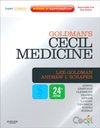
-
 Anglický jazyk
Anglický jazyk
Tropical diseases
Source: Wikipedia. Pages: 101. Chapters: West Nile virus, Ebola, Leprosy, Marburg virus, Malaria, Yellow fever, Lassa fever, Dengue fever, Chagas disease, African trypanosomiasis, Mass drug administration, Dracunculiasis, Leishmaniasis, Schistosomiasis,... Viac o knihe
Na objednávku, dodanie 2-4 týždne
23.22 €
bežná cena: 25.80 €
O knihe
Source: Wikipedia. Pages: 101. Chapters: West Nile virus, Ebola, Leprosy, Marburg virus, Malaria, Yellow fever, Lassa fever, Dengue fever, Chagas disease, African trypanosomiasis, Mass drug administration, Dracunculiasis, Leishmaniasis, Schistosomiasis, Onchocerciasis, Tropical disease, African Malaria Network Trust, Chikungunya, Filariasis, Trachoma, Intermittent preventive therapy, Buruli ulcer, Neglected diseases, Reston ebolavirus, Carte Jaune, Trinidad Regional Virus Laboratory, Ross River fever, Carrion's disease, United Front Against Riverblindness, Tropical ulcer, Lobomycosis, Lujo virus, Oropouche fever, Lábrea fever, Discovering Dengue Drugs - Together, National Malaria Eradication Program, Novartis Institute for Tropical Diseases, Tropical medicine, Universities Allied for Essential Medicines, Global Infectious Disease Epidemiology Network, Trematode infection, Male menstruation, Liebermeister's rule. Excerpt: Malaria is a mosquito-borne infectious disease of humans caused by eukaryotic protists of the genus Plasmodium. It is widespread in tropical and subtropical regions, including much of Sub-Saharan Africa, Asia and the Americas. Malaria is prevalent in these regions because of the significant amounts of rainfall and consistent high temperatures; warm, consistent temperatures and high humidity, along with stagnant waters in which their larvae mature, provide mosquitoes with the environment needed for continuous breeding. The cause of the disease is a protozoan, discovered in 1880 by Charles Louis Alphonse Laveran; while he was working in the military hospital in Constantine, Algeria, he observed the parasites in a blood smear taken from a patient who had just died of malaria. The disease results from the multiplication of malaria parasites within red blood cells, causing symptoms that typically include fever and headache, in severe cases progressing to coma, and death. Four species of Plasmodium can infect and be transmitted by humans. Severe disease is largely caused by Plasmodium falciparum. Malaria caused by Plasmodium vivax, Plasmodium ovale and Plasmodium malariae is generally a milder disease that is rarely fatal. A fifth species, Plasmodium knowlesi, is a zoonosis that causes malaria in macaques but can also infect humans. Malaria transmission can be reduced by preventing mosquito bites by distribution of inexpensive mosquito nets and insect repellents, or by mosquito-control measures such as spraying insecticides inside houses and draining standing water where mosquitoes lay their eggs. Although many are under development, the challenge of producing a widely available vaccine that provides a high level of protection for a sustained period is still to be met. Two drugs are also available to prevent malaria in travellers to malaria-endemic countries (prophylaxis). A variety of antimalarial medications are available. In the last 5 years, treatment of P. falciparum
- Vydavateľstvo: Books LLC, Reference Series
- Rok vydania: 2012
- Formát: Paperback
- Rozmer: 246 x 189 mm
- Jazyk: Anglický jazyk
- ISBN: 9781156621189









 Nemecký jazyk
Nemecký jazyk 


